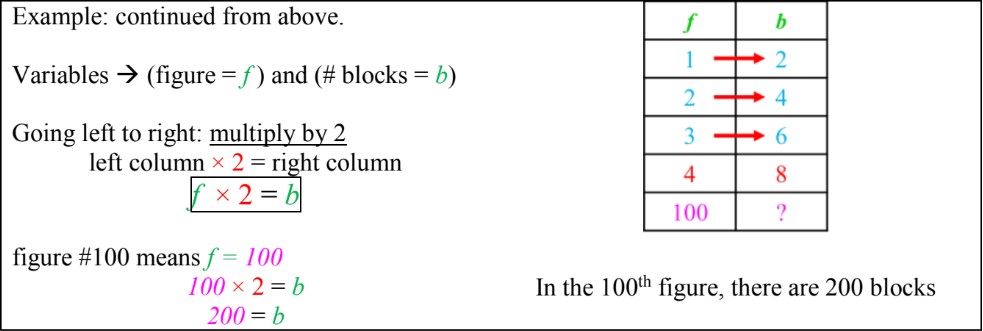Basics of solving patterns in T-tables
Topic Notes
In this lesson, we will learn:
- How to determine and write one-step and two-step relationships in T-tables as equations with variables
- How to solve equations: isolating variables in two-step relationships (opposite operation to both sides)
Notes:
- Recall that T-tables keep track of patterns and allow calculation of subsequent terms

- What is a fast way to find the 100th term? Adding by 2 each time is not efficient.
- T-table columns have a relationship between them. By writing this relationship as an equation, you can put in any number and find information about that term quickly.
- Ask: how do you go from the left column to the right column?
- Find one-step relationships through trial and error (if numbers are getting bigger it is + or ×; if numbers are getting smaller it is - or ÷)
- Assign variables to each column and use these variables in your equation

- For more complicated patterns (two-step relationships) the equation will have two operations: the first step will be [× or ÷] and then the second step will be [+ or -]
- Similar to one-step relationships, they can be found through trial and error
- Isolating variables in two-step equations by “doing the opposite to both sides” in the backwards order of operations (solve by doing + or - first and then × or ÷ after)


